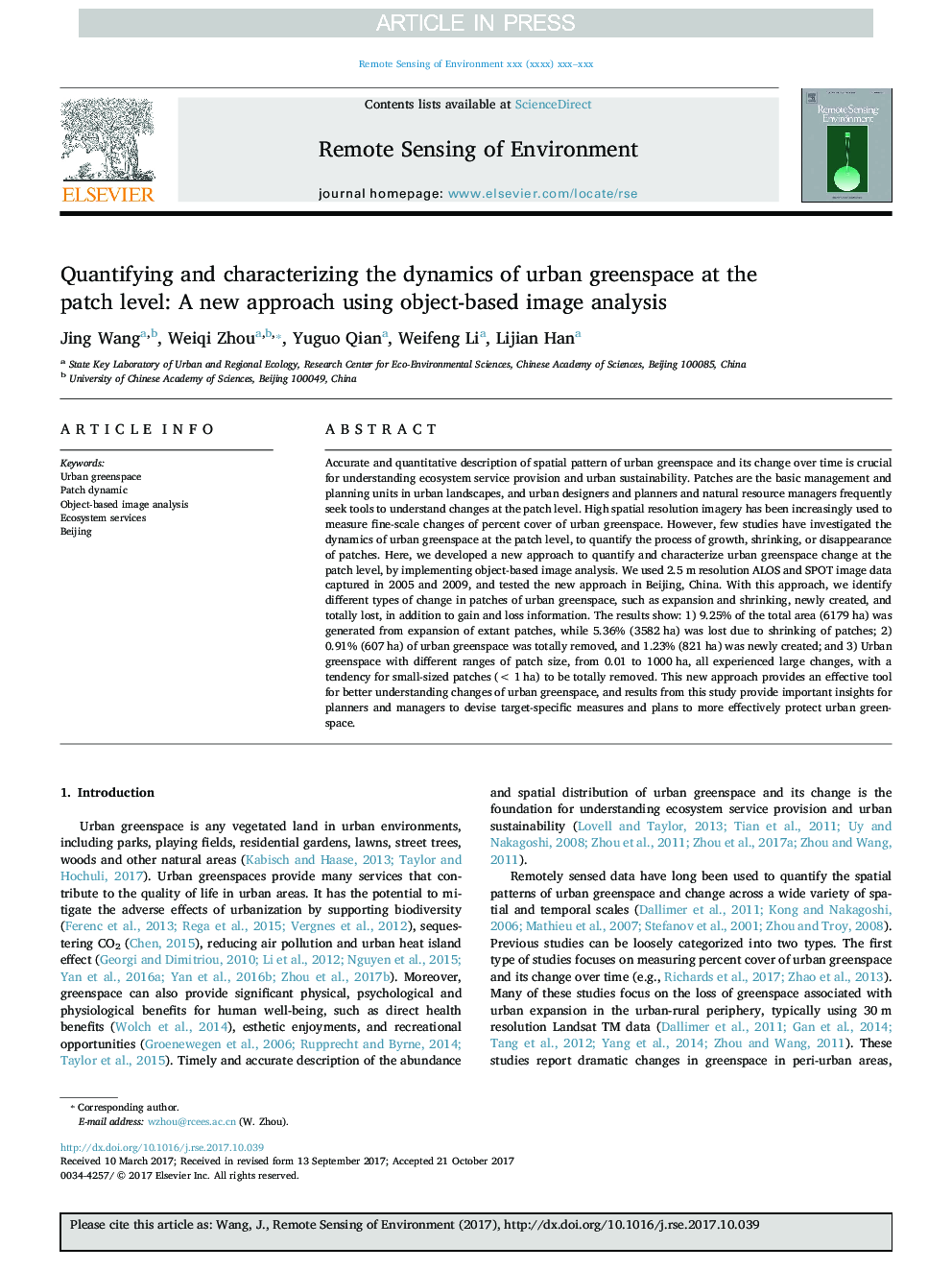| Article ID | Journal | Published Year | Pages | File Type |
|---|---|---|---|---|
| 8866826 | Remote Sensing of Environment | 2018 | 15 Pages |
Abstract
Accurate and quantitative description of spatial pattern of urban greenspace and its change over time is crucial for understanding ecosystem service provision and urban sustainability. Patches are the basic management and planning units in urban landscapes, and urban designers and planners and natural resource managers frequently seek tools to understand changes at the patch level. High spatial resolution imagery has been increasingly used to measure fine-scale changes of percent cover of urban greenspace. However, few studies have investigated the dynamics of urban greenspace at the patch level, to quantify the process of growth, shrinking, or disappearance of patches. Here, we developed a new approach to quantify and characterize urban greenspace change at the patch level, by implementing object-based image analysis. We used 2.5Â m resolution ALOS and SPOT image data captured in 2005 and 2009, and tested the new approach in Beijing, China. With this approach, we identify different types of change in patches of urban greenspace, such as expansion and shrinking, newly created, and totally lost, in addition to gain and loss information. The results show: 1) 9.25% of the total area (6179Â ha) was generated from expansion of extant patches, while 5.36% (3582Â ha) was lost due to shrinking of patches; 2) 0.91% (607Â ha) of urban greenspace was totally removed, and 1.23% (821Â ha) was newly created; and 3) Urban greenspace with different ranges of patch size, from 0.01 to 1000Â ha, all experienced large changes, with a tendency for small-sized patches (<Â 1Â ha) to be totally removed. This new approach provides an effective tool for better understanding changes of urban greenspace, and results from this study provide important insights for planners and managers to devise target-specific measures and plans to more effectively protect urban greenspace.
Related Topics
Physical Sciences and Engineering
Earth and Planetary Sciences
Computers in Earth Sciences
Authors
Jing Wang, Weiqi Zhou, Yuguo Qian, Weifeng Li, Lijian Han,
